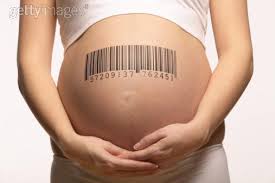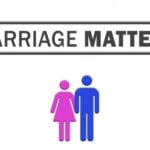Red Lights About Surrogacy
Like many other new means of assisted reproductive technologies (ART), surrogacy is claimed to help women, and be a great social good. But a closer look at surrogacy reveals that there are certainly some darker sides to the whole practice, and caution must be taken in this area.
There are plenty of problems associated with all this. For example, there have been many tragic legal cases of surrogate babies and questions about their “ownership”. Surrogate parenting can result in many of these babies being booted around like a football. And often all the various parties involved seem to be left in a state of grief and turmoil.
These cases simply highlight the fears many have had about allowing surrogacy to occur in the first place. I have already shared concerns about this industry. See here for example: https://billmuehlenberg.com/2006/11/10/surrogacy-concerns/
 In surrogacy arrangements, a surrogate mother agrees to carry a baby for another woman, and give it up upon birth. This can be done with or without a fee, and regulations around the globe vary greatly as to if and when this can occur. For example, commercial surrogacy is illegal in Australia, but legal in the US.
In surrogacy arrangements, a surrogate mother agrees to carry a baby for another woman, and give it up upon birth. This can be done with or without a fee, and regulations around the globe vary greatly as to if and when this can occur. For example, commercial surrogacy is illegal in Australia, but legal in the US.
Now that the practice has been around for a while, we can finally hear from the children of surrogacy themselves. How do they feel about all this? Many are now sharing their stories, and they can be pretty devastating. Indeed, entire groups have now been established, to let their stories be heard.
It seems there are now a number of such groups and sites around the globe. In Australia for example there is a site which discusses “the other side of surrogacy” and what it is like to be “a product of surrogacy”. The testimony of one such person is worth sharing here in part:
For almost two years now I’ve been trying to deal with the feeling of rejection from my biological mother. I still feel extremely blessed to have found her because, it did inform me so much about myself and I got to meet a huge extended family through her. But, I still haven’t figured out how to get past that feeling. As I have been reading other donor conceived blogs, and read about other donor conceived going through similar experiences or being rejected before they even got to meet their parent and or siblings it reminds me that I’m not alone. That this is just another one of the pits for third party reproduction for some of us.
And research is confirming all this, demonstrating that children of surrogacy arrangements are more likely to experience adjustment problems and the like. As one report states:
A team of British researchers, led by Susan Golombok, a professor of family research and director of the Centre for Family Research at the University of Cambridge, has found that children born with the help of a surrogate may have more adjustment problems – at least at age 7 – than those born to their mother via donated eggs and sperm. Their results, published in the June issue of the Journal of Child Psychology and Psychiatry, suggest that it’s more difficult for youngsters to deal with the idea that they grew in an unrelated woman’s womb, than with the concept that they are not biologically related to one or both parents.
In surrogacy in particular, as in IVF technologies in general, the family group can become a deformed freak: various combinations of blended and strange step-families emerge. One, two, three mums or more, perhaps several fathers, various unrelated siblings. And what of the hapless child? Even the wisdom of Solomon cannot prevent the child from ultimately being torn in two (or three, or four…), by the competing factions.
Even more bizarre permutations continue to develop. Consider the case of a surrogate mother in Los Angeles who recently made medical history by bearing the child of a woman who had been dead for a year. A surrogate mum was paid $20,000 to bear the child of the deceased woman who had her eggs harvested and fertilised by an anonymous donor. Imagine the baby’s sense of connectedness and rootedness, or lack thereof, as it grows up.
Many similar cases could be mentioned. Consider several more: a set of twins born 21 months apart have 3 different mothers. Each twin was reared in a different surrogate mother, with the second baby kept in deep freeze for over a year. And a British surrogate mother aborted the baby she was carrying for a Dutch couple when she decided they would not be suitable parents for the child.
Also, in England a woman has given birth to her own grandchildren. Her daughter had IVF treatment, and used her mother as a surrogate, by having the embryos implanted in her, and had twins through her. Talk about strained relations!
Finally, it can be mentioned that so problematic is surrogacy becoming, with so many heart-wrenching stories of really bad outcomes, that now we have documentaries being produced to warn about such problems and dangers. For example, early in 2014 the American-based group the Center for Bioethics and Culture (CBC) released a 52-minute video, Breeders: A Subclass of Women?
It contains very moving stories of four surrogate mothers, revealing a much darker and more serious side to the whole industry. A short official trailer of this documentary can be found here: https://www.youtube.com/watch?v=GNNCqs52jFU
One of these surrogates is Angelia Gail Robinson, 51, who agreed to carry twins for her brother and his male partner. But the arrangement turned sour and degenerated into a three-year legal stoush, resulting in a 2009 court decision in which she was legally recognised as the twin girls’ mother, and later given limited custody. Robinson said this about the situation:
“I think all surrogacy should be banned. The whole idea that you can just pay a fee and get a child is horrifying. Everything is focused on the people that can’t have children. Nothing is focused on the children themselves or the breeding class of women we’re creating.”
Jennifer Lahl, founder of CBC, says this: “A lot of lawmakers aren’t looking at these issues. They’re seeing things at the People magazine level. Someone can’t have a baby, here’s this technology and let’s change the law so we can help them. But is this really good for women? [Will we] create a new class, or maybe a subclass, of women who will become breeders?”
For these and other reasons we certainly need to proceed with great caution here. As is once again the case, the wants of adults are simply trumping the needs and wellbeing of children. That simply should not be the case.
http://www.news.com.au/lifestyle/parenting/commercial-surrogacy-is-is-really-so-bad-confessions-of-a-surrogate-mother/story-fnet08ck-1226958775886
[1109 words]




















It’s being used by @gaydads (on twitter aka Barry Drewitt-Barlow) where they are breeching the Surrogacy Arrangements Act 1985 to operate an illegal commercial surrogacy business based in the UK. They also operate the in Australia we too have banned commercial surrogacy. These men are famous for trying to force the Church of England to do a gay marriage. They lost in the UK courts and now they are going to the EU courts to over-rule the church of sovereign England. He’s since gone anti-religious and posted all this stuff on his twitter account about priest child abuse, so it’s anyone’s guess why he is so obsessed about having a white wedding. They just launched their paid infomercial broadcast on information.tv masquerading as a reality show about selling US made (and UK made) commercial surrogacy babies to the global gay elite.
A sub-class of breeding women….isn’t this the sort of thing that the gay militants are desperate for….a world full of male perverts with the female retained solely for producing more humans and providing the gay dads with baby “products”?
Like shelling out peas on a factory line; the resulting children must end up totally confused as to who and what they are.
Even if a woman is carrying a stranger’s child to hand over after birth, the whole process of that carrying and birthing creates a bond, which cannot necessarily be broken after the cheque has been cleared through the bank. The hitherto unseen (or ignored) mental and spiritual stresses are coming to the fore; they cannot be quietened.
I read a sci-fi novel once about “a sub-class of breeding women” decades ago (I can’t even remember the title…something about hand-maidens of God or something) It was shocking and totally unbelievable at the time to me. I have known personally of one incidence of a single woman using a sperm donation to have a child and the results were beyond tragic. She regretted it once she discovered how difficult raising a boy was on her own and especially when he started to ask about his “daddy”. The artificial procreation and surrogate parenting movement has even gone beyond the nightmare that I had envisioned then.
Surrogacy as a “babies for sale” business surely must rate as a kind of human trafficking. Consumerism is running to its own insane, obscene end: The human consumers have themselves become “consumer products”!
The self-titled “progressives” of our society are not slow in invoking the “precautionary principle” when it comes to matters environmental, yet in matters social, they love to be at the cutting edge of new social paradigms,rejecting the calls to proceed with caution.
The “precautionary principle” is an approach to decision- making in risk management which justifies preventive measures or policies despite scientific uncertainty about whether detrimental effects will occur. The UN’s working definition is
When human activities may lead to morally unacceptable harm that is scientifically plausible but uncertain, actions shall be taken to avoid or diminish that harm. Morally unacceptable harm refers to harm to humans or the environment that is
– threatening to human life or health, or
– serious and effectively irreversible, or
– inequitable to present or future generations, or
– imposed without adequate consideration of the human rights of those ?affected.?The judgement of plausibility should be grounded in scientific analysis. Analysis should be ongoing so that chosen actions are subject to review.?Uncertainty may apply to, but need not be limited to, causality or the bounds of the possible harm.?Actions are interventions that are undertaken before harm occurs that seek to avoid or diminish the harm. Actions should be chosen that are proportional to the seriousness of the potential harm, with consideration of their positive and negative consequences, and with an assessment of the moral implications of both action and inaction. The choice of action should be the result of a participatory process.
It would seem that “progressive” social policies such as “ART” surrogacy, same-sex parenting and same-sex marriage should also be subject to the rigors of the “precautionary principle” but obviously aren’t. Politics before principle.
Bonnie Oskvarek, US 23.6.14 / 1am wrote:
Could it have been this:
http://en.wikipedia.org/wiki/The_Handmaid's_Tale
which is an anti-Christian novel, so I don’t recommend it from the blurb, but it could be useful as a clue to how a god-hating world might think – a bit like the sci-fi of Arthur C Clarke or Isaac Asimov.